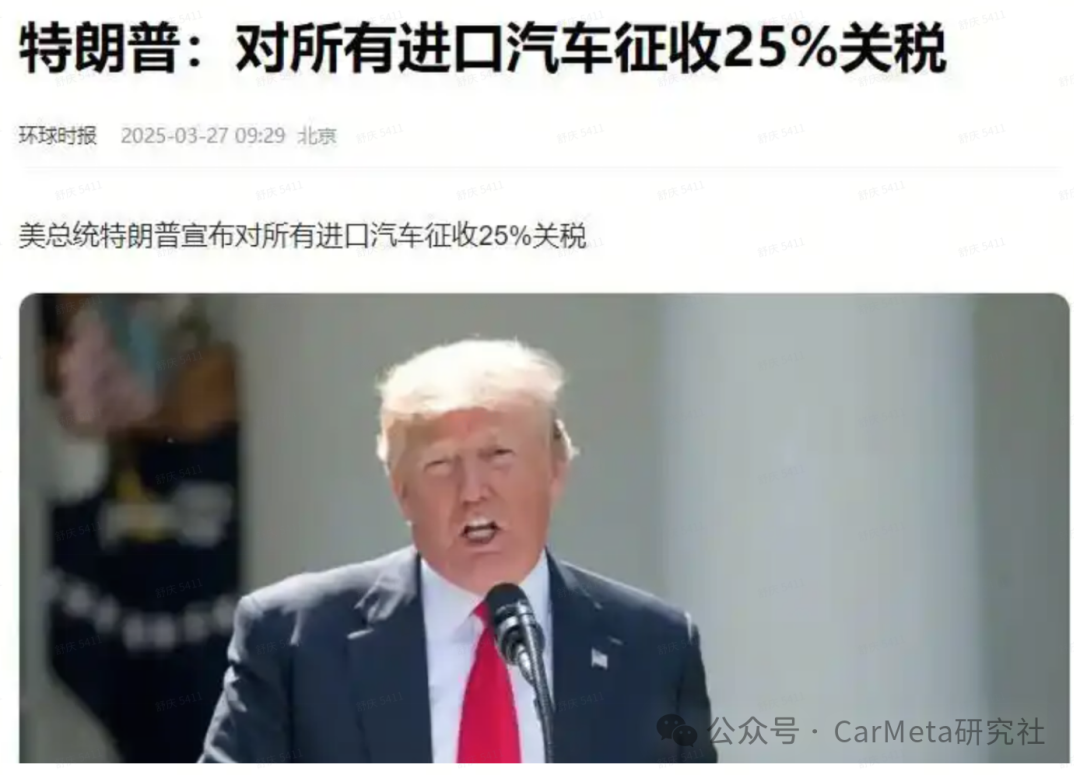The Impact of Trump's Tariffs on Our Automotive Industry: A Deep Dive
![]() 04/08 2025
04/08 2025
![]() 408
408
Amidst the intricate web of the current international economic climate, the Trump administration has rolled out a series of tariff measures, the ripples of which have extended to the global automotive sector. While these policies ostensibly target China, they have struck a chord with the entire global automotive supply chain.
I. Decoding Tariff Policies: From 'Reciprocity' to Strategic Maneuvers
The tariff regime under Trump primarily encompasses three facets:
- Basic Tariff: A uniform 10% tariff on all U.S. imports, effective April 5, 2024.
- Reciprocal Tariff: Additional 'reciprocal tariffs' imposed on 60 nations, with China facing an extra 34%, bringing the cumulative tariff to 54% (inclusive of the previous 20%).
- Specific Commodity Tariff: Steel and aluminum tariffs escalated from 10% to 25%, with a 25% tariff on automobiles and parts commencing April 3, 2024.

These policies, albeit appearing as reciprocal actions, are strategically targeted at disrupting China's new energy vehicle firms' overseas expansion while also significantly impacting Japanese and German automakers.
II. Behind the Numbers: Who Bears the Brunt of Tariffs?
According to pertinent data:
- China's auto exports to the U.S.: 116,000 vehicles valued at $4.8 billion; auto parts exports totaled $27.6 billion, amounting to roughly $32.4 billion, constituting 0.9% of China's total exports.
- Japan and Germany's auto exports to the U.S.: Japan exported 1.37 million vehicles worth approximately $40.2 billion; Germany exported 450,000 vehicles worth roughly $85 billion.
Trump's tariff policy hits Japanese and German automakers harder, whereas most Chinese auto exports are from U.S. local automakers (e.g., Ford, General Motors, Tesla), thus having a comparatively minor impact on China's overall automotive industry.
III. Stock Market Ripples: Implications for Chinese Auto Firms
Trump's tariff policy has sparked global stock market volatility, affecting Chinese auto startups listed in the U.S. (e.g., NIO, XPeng, Li Auto, Zeekr). However, the author contends that these firms' long-term success hinges on their competitiveness in the new energy sector.
IV. Global Economic Dynamics and China's Automotive Future Trump's tariff policy has catalyzed rapid shifts in the global economic landscape, presenting both challenges Internal Circulation: With the U.S. market constrained, emerging markets like Southeast Asia and Africa offer new growth avenues.
The author asserts that Trump's seemingly harsh tariff policy inadvertently clears the path for China's automotive industry. Japanese and German automakers struggle in the tariff quagmire, U.S. traditional automakers lag in transformation, while Chinese automakers have woven a global 'new energy skynet'. Postscript National-level support is accelerating China's automotive industry: Trump's unpredictable tariffs have stirred up global turbulence, prompting us to vigorously develop economic internal circulation as a fallback. Additionally, the U.S.'s unreliable policies are drawing other economies closer to us, significantly boosting our automotive industry. Is it a blessing in disguise? Only time will tell. In 2009, we became the world's largest car producer; in 2023, the largest exporter. In the new energy realm, China's automotive industry leads the pack, and it remains to be seen how many emerging players will survive. Nonetheless, the country has already taken decisive action with the merger of three central enterprises, heralding the birth of a giant poised for industry dominance. How many remaining brands will endure? The future unfolds.








